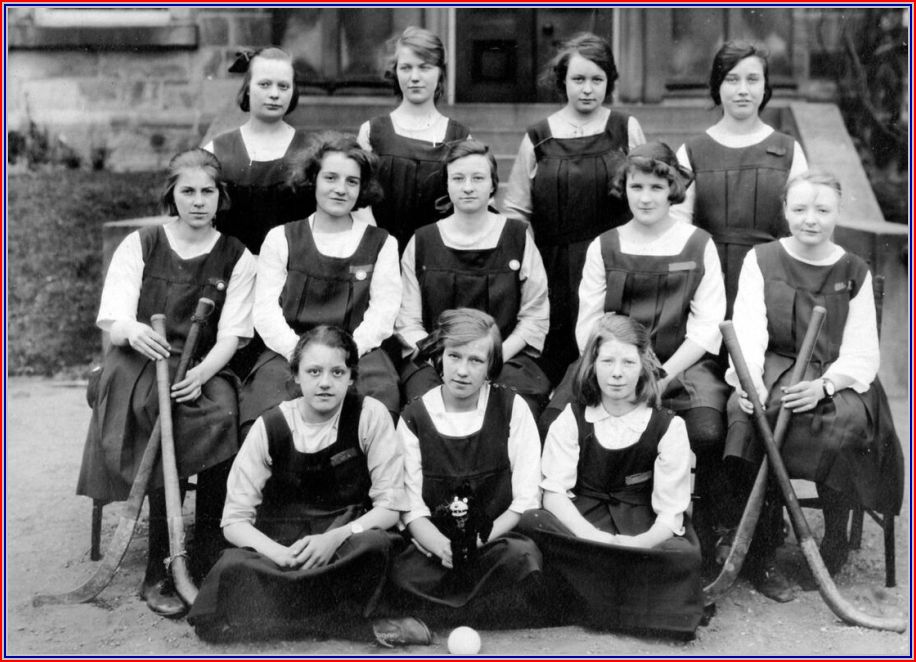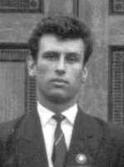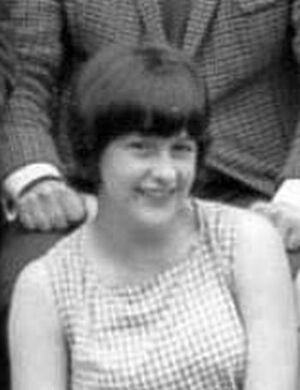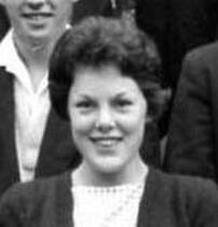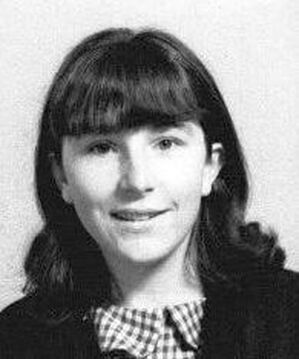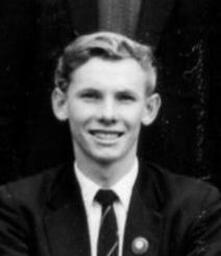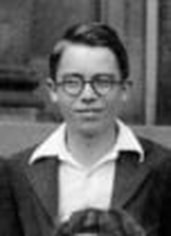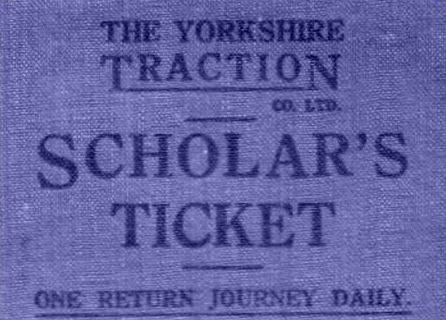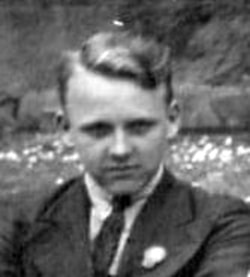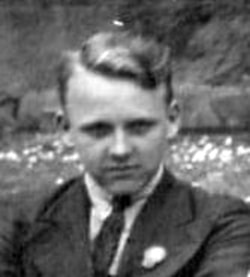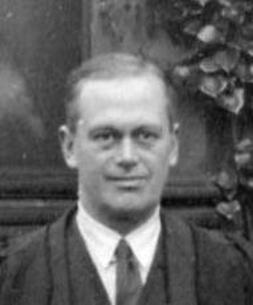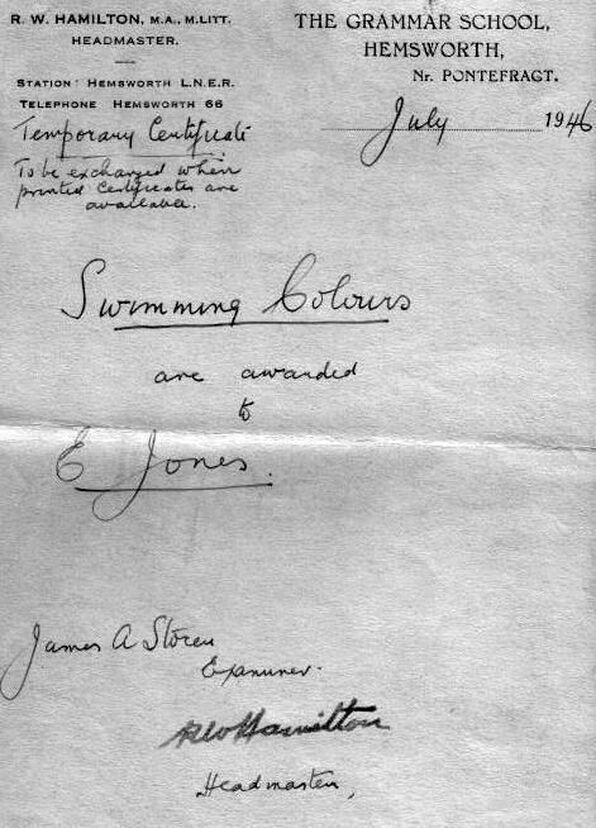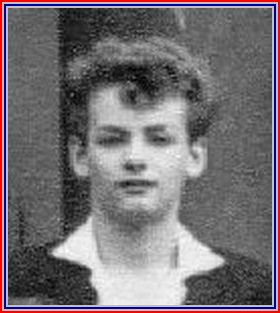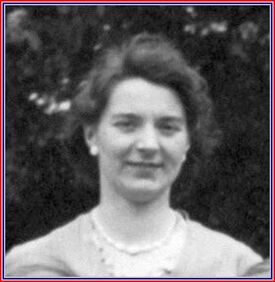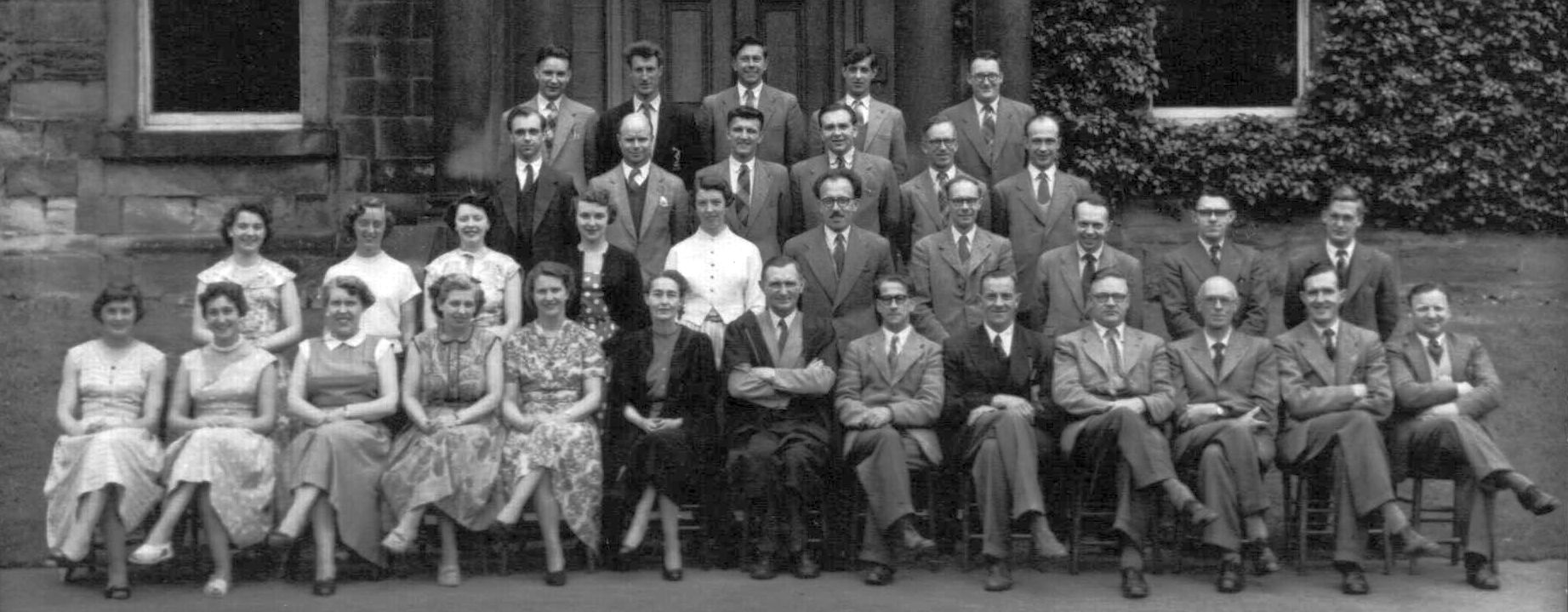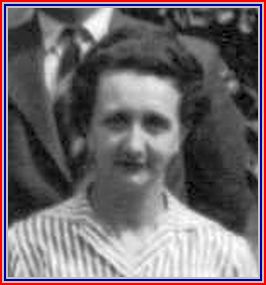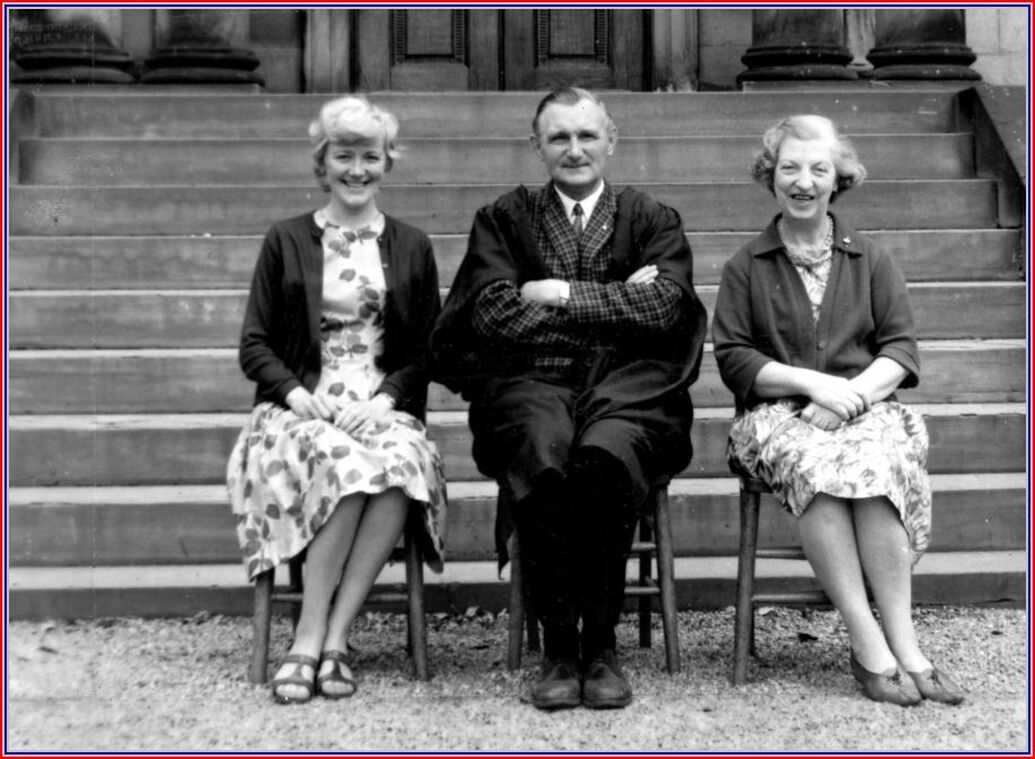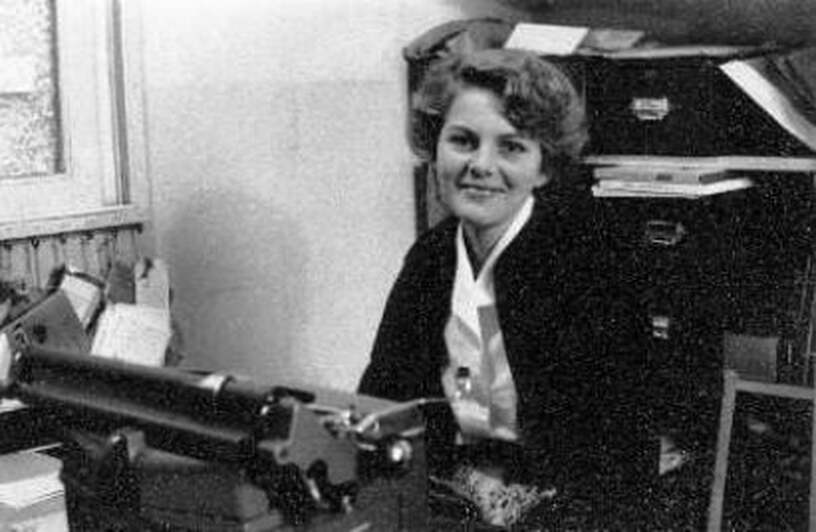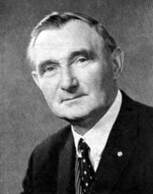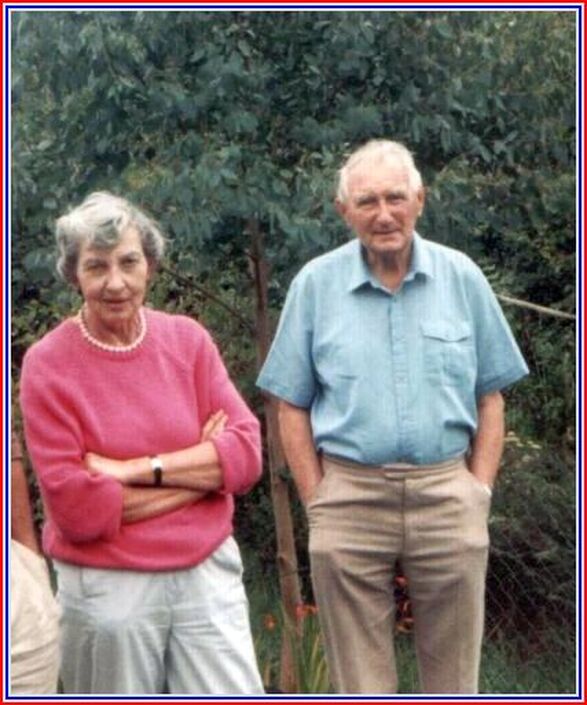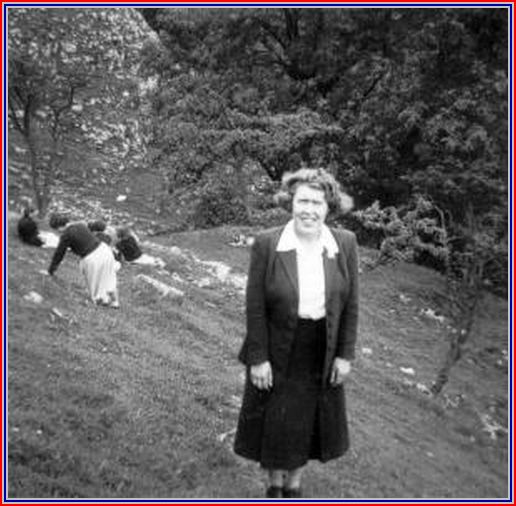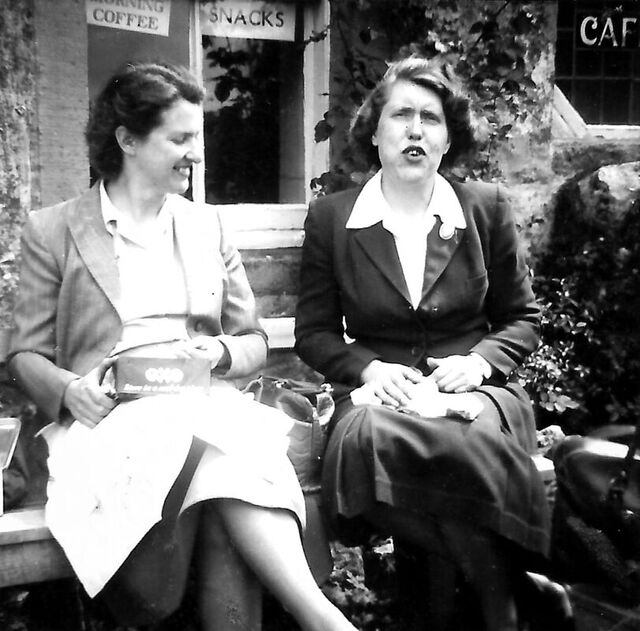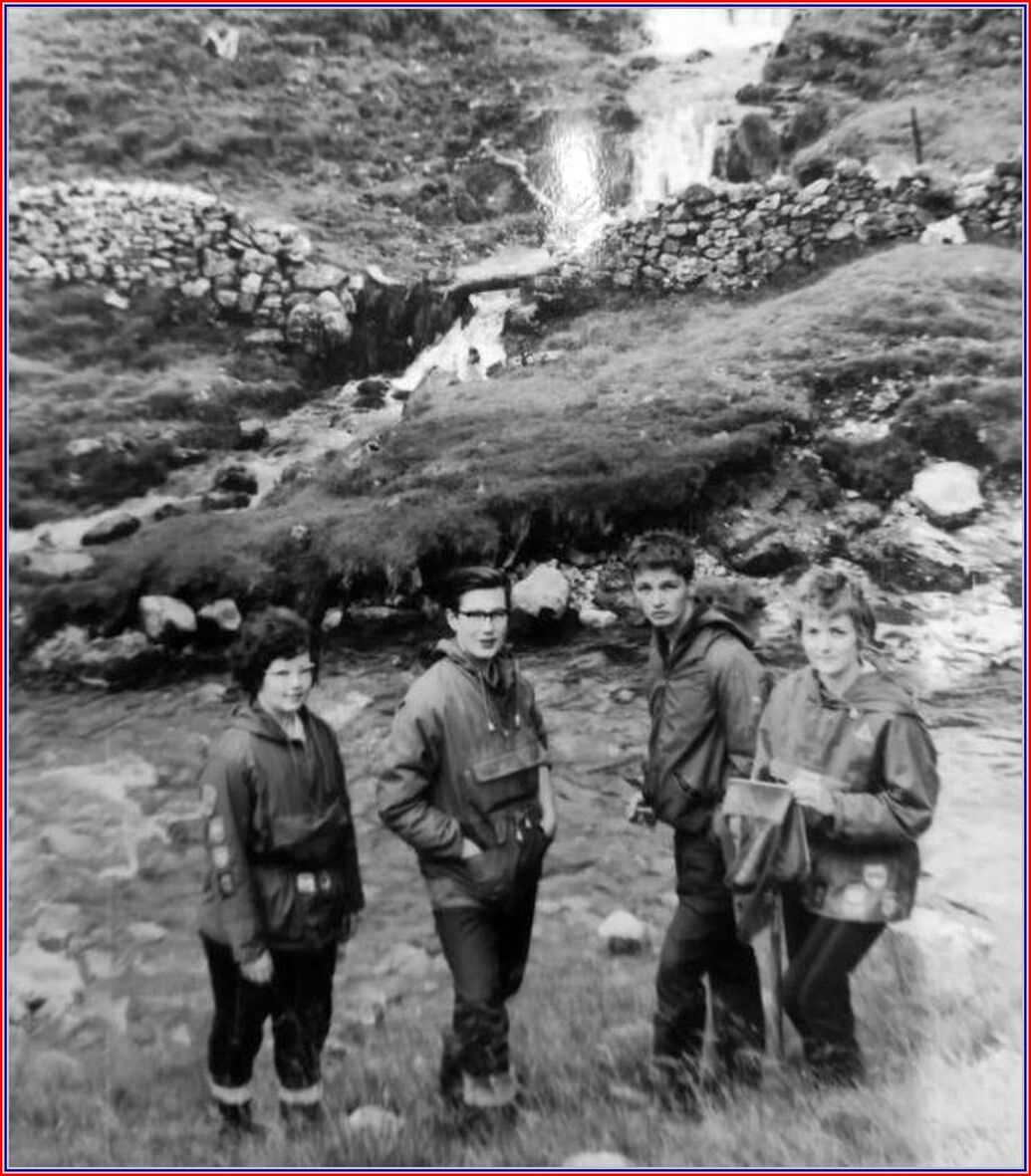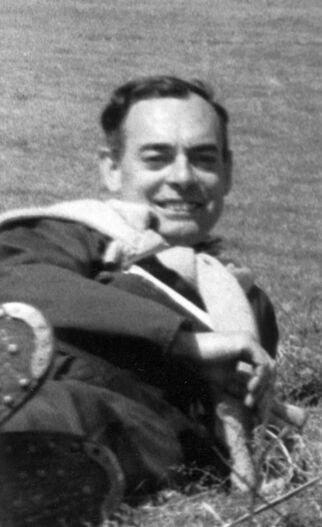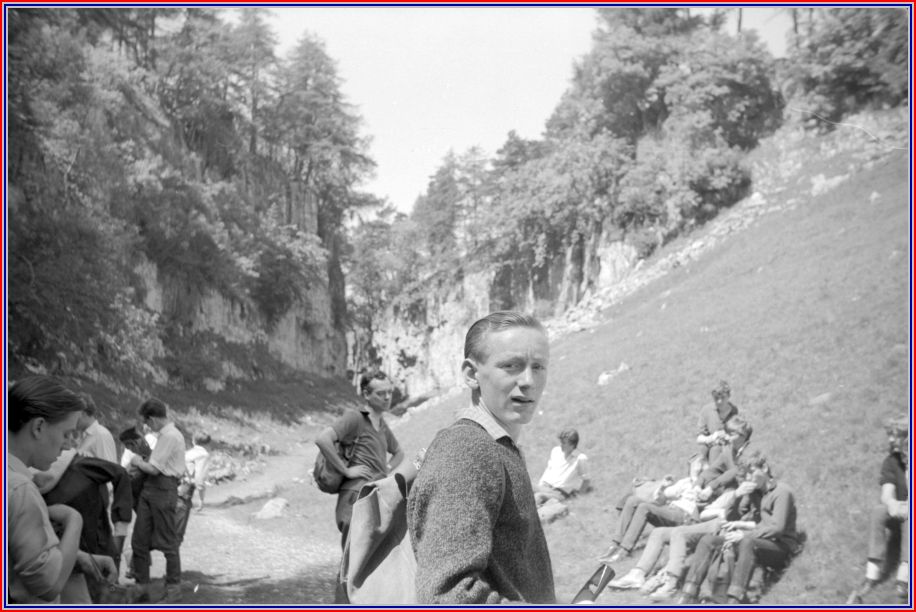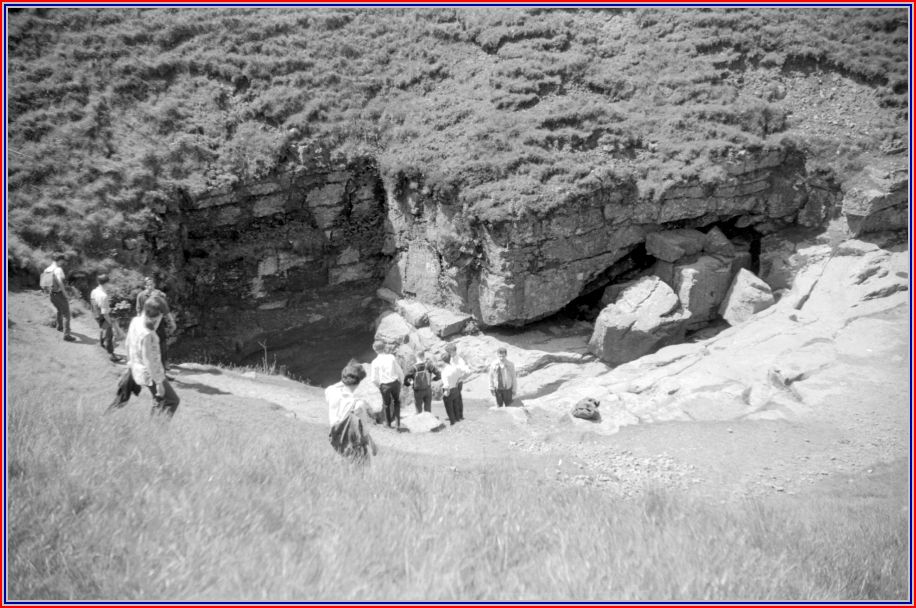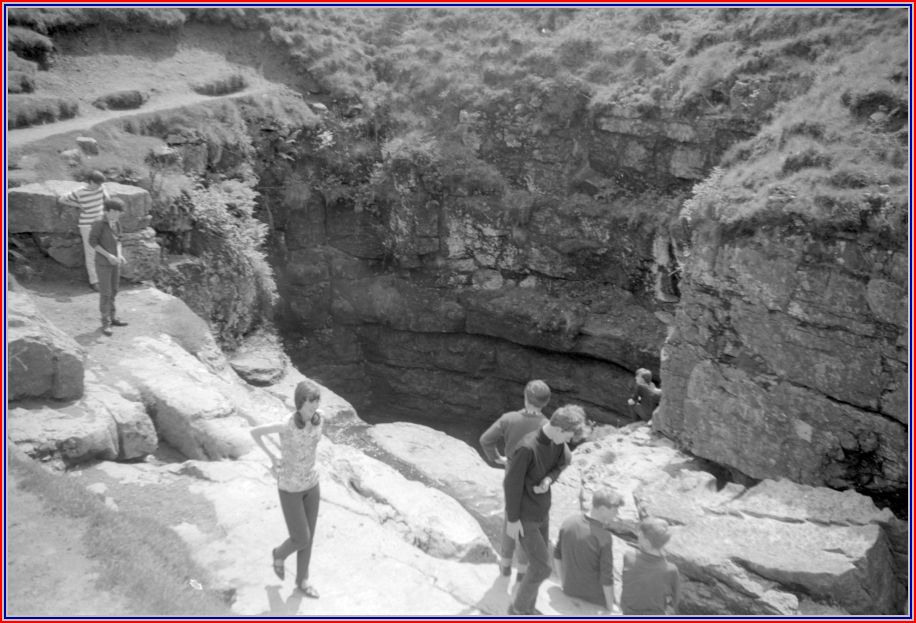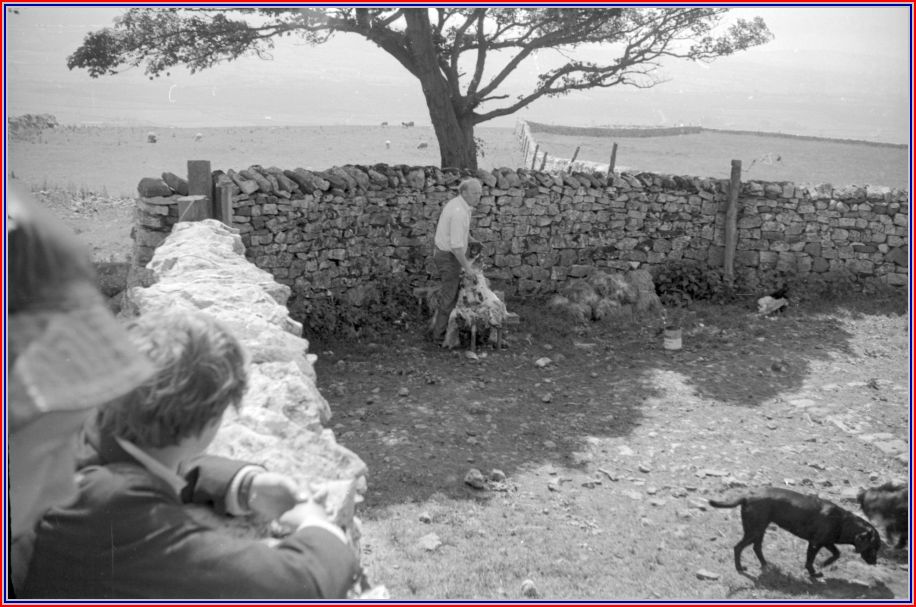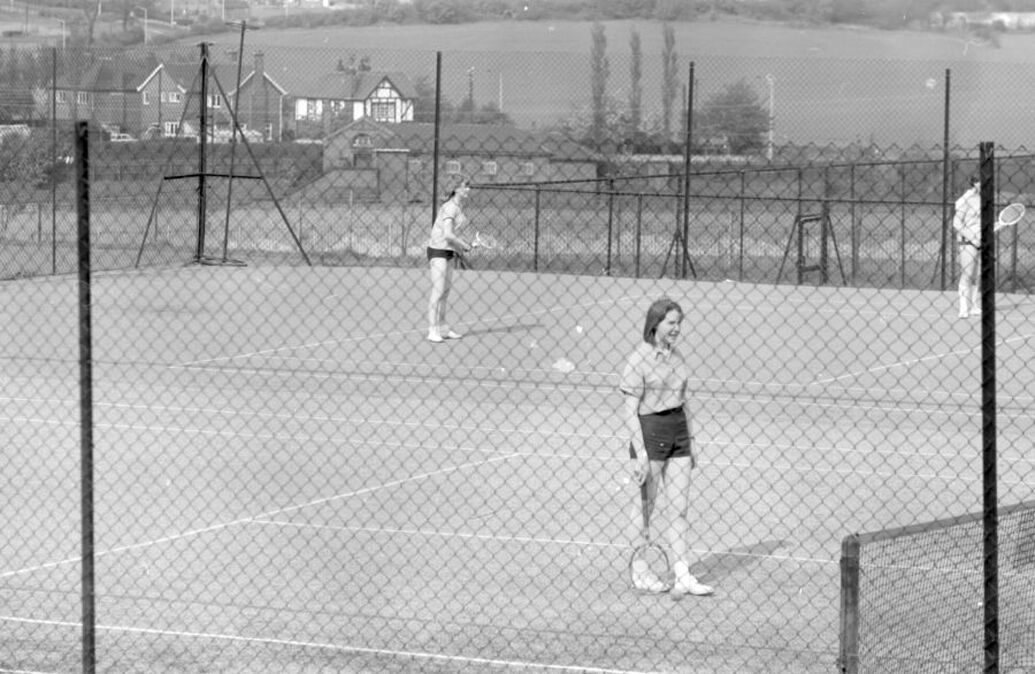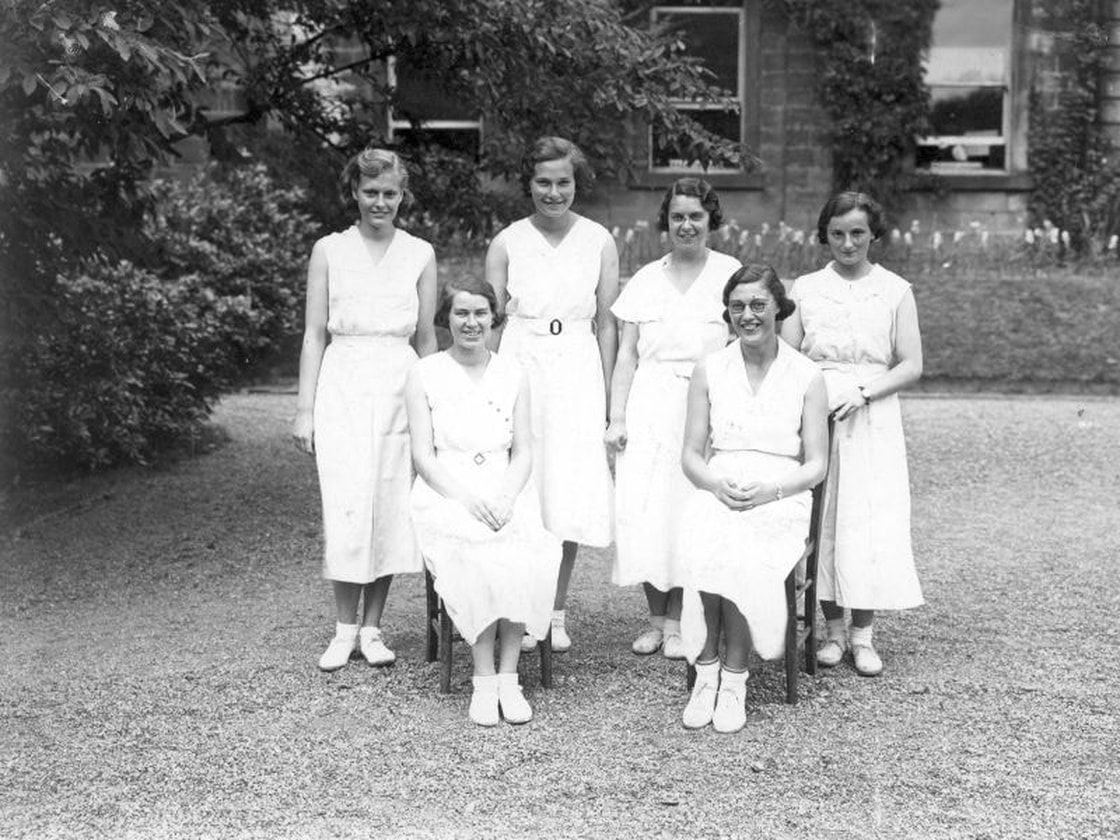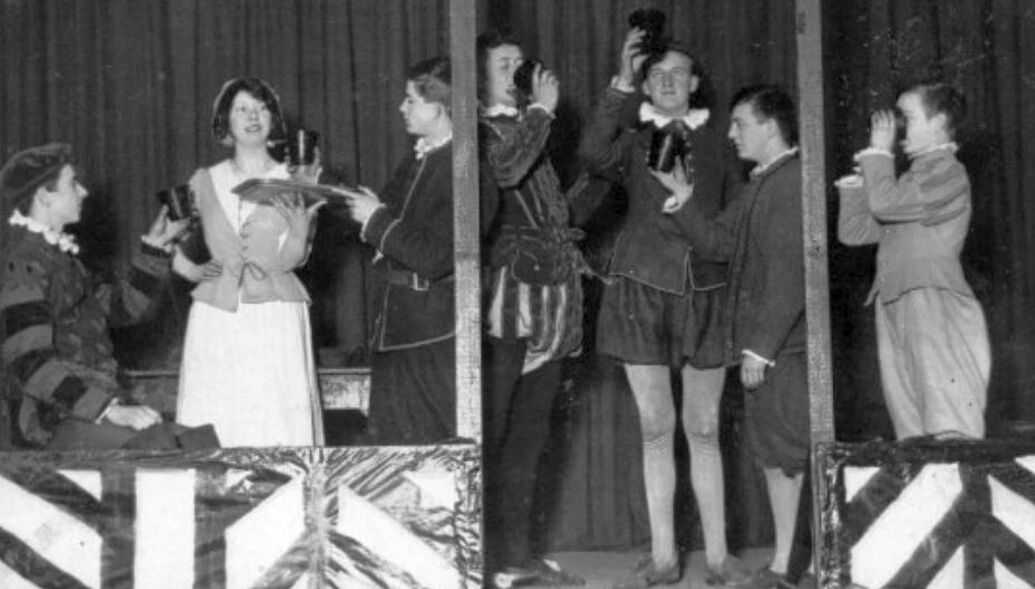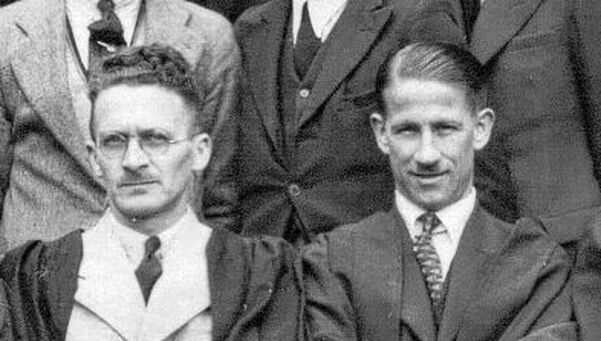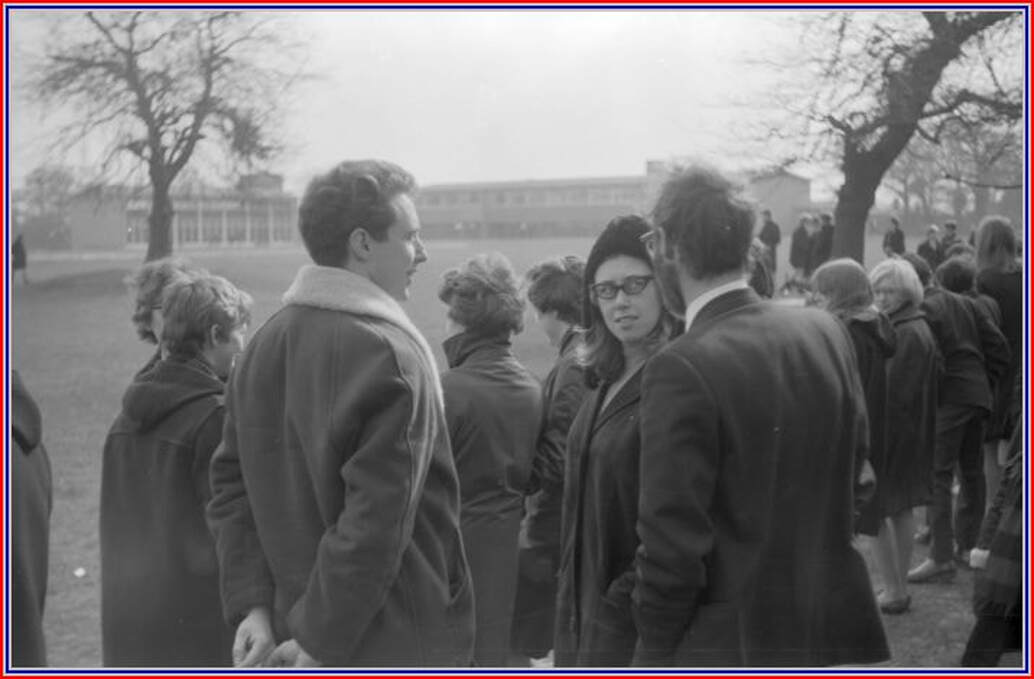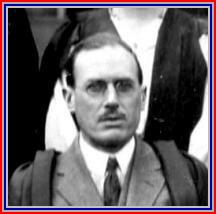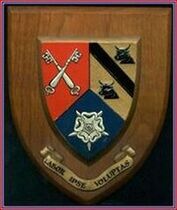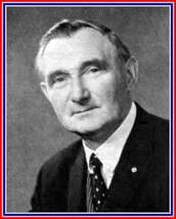A Personal View 2
Status: 15 items
Status: 15 items
The first school Hockey team in the 1920s
What a great web site. R.W. Hamilton would have been proud. He was proud of his school. I was teaching there, when he retired at Christmas 1967 and I think what happened to the place upset him. It upset many of us who had been pupils there and later returned as staff.
Terry McCroakam
Terry McCroakam
Table of Contents
|
1. Tony Pickering
2. Linda Bona 3. Daphne Hart 4. Christine Fitzpatrick 5. Peter Cooper |
6. The 1947 School Magazine Editorial
7. The Scholar's Ticket 8. Memories from the Forties 9. Swimming 10. Dave went to HGS in September 1955 |
11. The School Office
12. HGS and Mr Hamilton 13. A Field Trip to the Dales, 11th July 1954 14. An excursion to Wentbridge in 1926 15. The Tennis Courts |
1. Tony Pickering
Hi Dave,
Many thanks to Ray Noble for putting me in contact with this site. Universal themes in all the comments on the site are the fond memories and gratitude to Hemsworth Grammar School; in this regard I am no exception. As a transfer scholar from the Modern School I had a lot of catching up to do - missing out 5th year and joining L6S and the competition of Jean Snookes et al. This did not hinder taking part in other school activities such as Colts rugby XV, 1st rugby XV, Tennis, Athletics, School Play and Inter-House competitions - all with great enjoyment apart from the cross-country run! Against this background of secondary education, I am eternally grateful to the old school in helping gain entrance to the Medical School of Edinburgh University. This month I have retired from clinical practice after 37 years, latterly spent as Consultant Eye-Surgeon here in Swansea. Time now for more travel and golf, and to contemplate with my male contemporaries, the prospect of being called an O.A.P. next year!!
Best wishes,
Tony Pickering
Price House, HGS 1952-58
August 2003
Many thanks to Ray Noble for putting me in contact with this site. Universal themes in all the comments on the site are the fond memories and gratitude to Hemsworth Grammar School; in this regard I am no exception. As a transfer scholar from the Modern School I had a lot of catching up to do - missing out 5th year and joining L6S and the competition of Jean Snookes et al. This did not hinder taking part in other school activities such as Colts rugby XV, 1st rugby XV, Tennis, Athletics, School Play and Inter-House competitions - all with great enjoyment apart from the cross-country run! Against this background of secondary education, I am eternally grateful to the old school in helping gain entrance to the Medical School of Edinburgh University. This month I have retired from clinical practice after 37 years, latterly spent as Consultant Eye-Surgeon here in Swansea. Time now for more travel and golf, and to contemplate with my male contemporaries, the prospect of being called an O.A.P. next year!!
Best wishes,
Tony Pickering
Price House, HGS 1952-58
August 2003
2. Linda Bona (was Collingwood)
I was delighted to discover your site while looking for information about Shafton. I was in the 1962-1969 lot, who went through the 6th form during changeover to comprehensive. The site has brought back so many memories, which I will try and write about. I also have some form and choir photos which I will scan and send. I was in Holgate, and remember having to sing a solo every year to get points for the House Competition. Miss Evans wasn't very pleased, because we all turned up and sang a hymn for our solo. She almost begged each of us to sing something different. One of the few who had the confidence to was Louise Armitage, who now sings with the major Sheffield choir. I am in contact with several people from that year, so will direct them to the site.
Linda
Holgate, August 2002
Linda
Holgate, August 2002
3. Daphne Hart
Hello, everyone,
Sheila Kelsall and I met on Friday after 42 years! We talked for England, and we had another session today. I have seen Neil Rodgers, Les Hicken, Ray Griffiths, Geraldine Walker (Wilson), within the last 4 years, and my mum is in touch with Wray Vamplew's mum, after 66 years! After reading about Mr. Collette on the web site, I remembered when we had his wife on the ward. There were four ex HGS qualified nurses on the ward, and we were all quaking in anticipation of his visits, but his manner was impeccable, his voice so well modulated and he was so much the gentleman, my memories of him will always be fond.
Daphne
April 2002
Sheila Kelsall and I met on Friday after 42 years! We talked for England, and we had another session today. I have seen Neil Rodgers, Les Hicken, Ray Griffiths, Geraldine Walker (Wilson), within the last 4 years, and my mum is in touch with Wray Vamplew's mum, after 66 years! After reading about Mr. Collette on the web site, I remembered when we had his wife on the ward. There were four ex HGS qualified nurses on the ward, and we were all quaking in anticipation of his visits, but his manner was impeccable, his voice so well modulated and he was so much the gentleman, my memories of him will always be fond.
Daphne
April 2002
4. Christine Fitzpatrick
My sister Daphne put me on to this - what a great idea! How lovely to talk about old times and see a few old faces! I do think it a shame though that the High School's website didn't have room for the old Hilmians to join in. I left HGS in 1971, and have a lot of happy memories of my time there. It gave me a very good education, far more extensive than seems to be available now in the state system. Thanks for the opportunity to join you all. You can add my and sister Helen Slater's name on the Talbot house list. If you remember, they used to put siblings in the same house as tradition demanded. It's a great site. Keep up the good work.
Christine Fitzpatrick
May 2002
Christine Fitzpatrick
May 2002
5. Peter Cooper
I really cannot believe it is 40 years since I left. Looking at all this for the last 3 hours it just seems like yesterday. Happy days though we probably didn't appreciate just how happy at the time. In those days our whole lives revolved around school even for sport and leisure. I guess we were lucky to be so well provided for.
Peter Cooper
Guest 1956-1963 February 2003
Peter Cooper
Guest 1956-1963 February 2003
6. The 1947 School Magazine Editorial
1947 is a landmark in the history of the School Magazine; for the first time since before the war a printed magazine has been produced. All the articles appearing in this issue were selected by a committee of members of the sixth form, while it has been edited by one of that august body.
On reading the magazine you will notice that several school societies have ceased to function as the need for them has passed, but new ones have been formed to make school life more interesting. We have now historical, debating, literary and current affairs societies and Esperanto and gramophone clubs. The standard of the original contributions this year has been high so that many quite good ones had to be rejected, and we should like to thank all contributors whether or not their articles were printed.
Visitors to school this year included Lady Houldsworth on Speech Day, Mr Appleby to adjudicate the Music Competition, and Mrs. Blair for the Reading Competition. All of these gave interesting and valuable comments and hints on their various subjects. Among the notable events of the past year was the Staff Play, an excellent performance second only to the School Play, in the quality of acting. Another feature of the year has been the inclement weather which virtually put a stop to inter-house and inter-school sport during the Spring Term. Even the cross country run had to be cancelled. However, during the Winter Term the school teams had great success and recently a representative school team showed other West Riding Schools our true worth by winning in the sports at Huddersfield. These setbacks have increased competition in cricket and athletics during the Summer Term and there has been great keenness shown in music, dramatics and reading.
Since the last issue of the magazine Mr. H. Davies, Miss Robinson, Mr. Weissemburg, Miss Bromley, Miss Thomas, Miss Stott and Mrs. Broodbank have left. Miss Robinson is now Mrs. H. Davies and Miss Stott is now Mrs. Singleton. This has caused members of the lower forms to eye any unattached males calling at school with deep suspicion. We have to give a by now belated welcome to thirteen new members of staff - Mr. B. H. Smith, Mr. W. A. Davies, Mr. Oaks, Mrs. Burn, Miss Davies, Miss Metcalfe, Miss Bisset, Miss Lawton, Miss Horsfield. Mr. Jones and Mr. Farrar, while Miss Billborough and Mr. Poole must be welcomed and regretted at the same time as both are leaving at the end of this term.
In an attempt to pacify sundry Old Hilmians who will sagely remark "The old magazine isn't what it used to be," we have again included an Old Hilmian section. The whole of the original contributions section has been divided into two sections - a Senior and a Junior. We should not like the Seniors to suffer by comparison.
A School Magazine is not like an ordinary magazine for it is something one saves for years and reads to refresh old memories. That is why this issue has been printed. Keep it; in later years you may find it amusing.
Bruce Kaye, U.6A
On reading the magazine you will notice that several school societies have ceased to function as the need for them has passed, but new ones have been formed to make school life more interesting. We have now historical, debating, literary and current affairs societies and Esperanto and gramophone clubs. The standard of the original contributions this year has been high so that many quite good ones had to be rejected, and we should like to thank all contributors whether or not their articles were printed.
Visitors to school this year included Lady Houldsworth on Speech Day, Mr Appleby to adjudicate the Music Competition, and Mrs. Blair for the Reading Competition. All of these gave interesting and valuable comments and hints on their various subjects. Among the notable events of the past year was the Staff Play, an excellent performance second only to the School Play, in the quality of acting. Another feature of the year has been the inclement weather which virtually put a stop to inter-house and inter-school sport during the Spring Term. Even the cross country run had to be cancelled. However, during the Winter Term the school teams had great success and recently a representative school team showed other West Riding Schools our true worth by winning in the sports at Huddersfield. These setbacks have increased competition in cricket and athletics during the Summer Term and there has been great keenness shown in music, dramatics and reading.
Since the last issue of the magazine Mr. H. Davies, Miss Robinson, Mr. Weissemburg, Miss Bromley, Miss Thomas, Miss Stott and Mrs. Broodbank have left. Miss Robinson is now Mrs. H. Davies and Miss Stott is now Mrs. Singleton. This has caused members of the lower forms to eye any unattached males calling at school with deep suspicion. We have to give a by now belated welcome to thirteen new members of staff - Mr. B. H. Smith, Mr. W. A. Davies, Mr. Oaks, Mrs. Burn, Miss Davies, Miss Metcalfe, Miss Bisset, Miss Lawton, Miss Horsfield. Mr. Jones and Mr. Farrar, while Miss Billborough and Mr. Poole must be welcomed and regretted at the same time as both are leaving at the end of this term.
In an attempt to pacify sundry Old Hilmians who will sagely remark "The old magazine isn't what it used to be," we have again included an Old Hilmian section. The whole of the original contributions section has been divided into two sections - a Senior and a Junior. We should not like the Seniors to suffer by comparison.
A School Magazine is not like an ordinary magazine for it is something one saves for years and reads to refresh old memories. That is why this issue has been printed. Keep it; in later years you may find it amusing.
Bruce Kaye, U.6A
7. The Scholar's Ticket
Image from Sheila Kelsall. Thank you, Sheila.
Picture this: a sky-blue linen-covered stiff oblong of card folded in the middle. It was renewed every year and called the "Bus Contract". This had to be shown to the Conductor on the bus. Pupils kept them in a variety of places. Some girls had a see-through plastic window on their shoulder purses, others kept them in the top pockets of their blazers in the Summer term, handy for reaching in and waving about when required. There was usually a small front section of the satchel which may have housed the pencil case and contract. It varied. (Can't comment about the boys). If a pupil lived more than 3 miles from the school, then free bus travel seemed automatic. The School buses pulled into the Boy's playground at 4pm and if after-school clubs, choirs or sports activities meant you missed that ride home, then a walk down into the village would give you a selection of other buses. The morning journey to school was by public transport which usually ran to time.
Sheila Kelsall
Several people who lived in Shafton paid an extra amount and changed their blue contract for a red one which could be used when going home for lunch.
Frank Morley
Sheila Kelsall
Several people who lived in Shafton paid an extra amount and changed their blue contract for a red one which could be used when going home for lunch.
Frank Morley
8. Memories from the Forties
Dear Dave,
Having had a good browse through the web site, I have come up with some random memories of HGS during my time there. I trust they might be of interest to you and others.
Transfer Scholarships
I believe these began in the 1943-1944 year as I went up into Form 2B. I remember that to us the transfer pupils looked a lot older than us - people like Jack Greenhough, Jim Foster and Pete Thorpe. We did not merge until Year 4 when we had to choose between Art or Science and I went from 3B to 4C. I remember my next door neighbour's boy - Bob Atkinson - transferring from Doncaster Technical School to HGS in order to do School Certificate. He was a fine cricketer and sprinter but never took to Rugby Union - being a soccer player on the books of Bolton Wanderers as a teenager. Jim Foster, another transferee, had a fine career at HGS culminating in being Head Boy in the 1948-1949 year.
Air Raid Shelters
As I remember these were to be found between the old Cricket Pavillion and the top corner of the 1st XV rugger pitch. In 1942, when I started at HGS, we were still obliged to carry our gas masks and we had Air Raid Drill. When the alarm bell was sounded, we all trooped out to the shelters to sit on hard wooden benches in cold damp surroundings lit only by lamps. After a suitable interval we all trooped back to class. Whether or not the shelters would have provided any protection against bombs is problematical in hindsight but it was exciting at the time.
Morning Assembly
These were fairly conventional with prayers and a hymn plus School announcements (games results, society meetings, etc.) As a Prefect in later years, I was allowed to hit boys over the head with my hymn book for misbehaviour. Prefects also had the nerve-wracking task of reading an extract from the Bible during Assembly. This was a duty shared by all Prefects. We waited outside the Head's study until he went to Assembly to accompany him on to the stage. My abiding memory of Assembly was RWH reading out a roll call of Old Hilmians killed, wounded in action, missing, or prisoners of war - a sobering experience.
School Uniform and Rationing
In 1942, clothing was rationed so there was some relaxation in school uniform regulations - only tie and cap were compulsory. Parents were allowed to buy where they could. However, to take the point in one of the Forums, Sawdons of Cross Hills were the official suppliers of school uniform as far as I remember. Sheila Sawdon was a pupil at HGS when I was there, between 1942-1949, though not in my form. Regarding rationing, anyone with an old Report Book will remember having their weight and height recorded on the back page at intervals - done by Mr Leonard in PT lessons. We also had our feet measured and I well remember exceeding the Government limits for foot size and age and being able to go home and tell my Mother that I had been awarded an extra 40 clothing coupons for this. As you can imagine, these were received with delight as extra bargaining power in the bartering culture of the times.
School Dinners
I can still remember my first school dinner at HGS. The pudding was apple dumpling which as I recall never appeared on the menu again all the time I was there. As one entered the Dining Hall, the girls were on the right and the boy's were on the left with the first table on the right being Staff. Each table was headed by a Prefect and seated 12-14 with 1st Form at the bottom acting as Skivvies to clear away dishes and to scavenge for extra food if possible. There was an excess of boys over girls, so I remember being a skivvy on a girls' table headed by Margaret Townend, whose photograph appears on the website. Main meals tended to be of the meat and two veg. type (quantity rather than quality) with Shepherds Pie well to the fore. Puddings were of the following variety:
Wooden Leg - baked jam roll - a popular favourite and skivvies were guaranteed the knob end - all pastry and no jam;
Spotted Dick - Sultana Sponge;
Jelly and Custard in summer;
Frog Spawn - sago; and always rice pudding.
Custard was eaten at one's peril and regularly we had the infamous Black Death - stewed prunes.
As I remember, the school record for eating prunes was 41, by a lad from Grimethorpe called Johnny Orange. The skivvies were bringing in prunes from all over the room when he went for the record - I cannot recall it being broken while I was there. The Staff menu was much better than ours and when their trolley trundled from the kitchen to their table, it was like a scene from Oliver. As First Formers, we were amazed at the amount of food Mr Waters, Maths Teacher, was able to get onto his fork! There was a twist to school dinners in that you could take your own if you wished. These were consumed in the Domestic Science room at the end of the corridor next to the Main Hall. Crockery was supplied from the main Dining Hall. It was a Prefect's job to collect and return a basketful of this every day. I had a spell of about a year doing my own food and I remember that dried egg sandwiches figured prominently. As a Prefect, I finally graduated to having a table of my own in the Dining Hall, but the only skivvy I can remember was a cheeky young First Former by the name of Eric Sale (Head Boy 1952-53).
To be fair, the kitchen staff worked miracles really, especially as things became in short supply towards the end of the war and the early years of peace. If I remember correctly, the head cook was Mrs. Cliffe who was the wife of the School Caretaker.
Here ends the first epistle, Dave! I hope it is both of interest and of value to the Site.
Regards from Eric Jones.
Having had a good browse through the web site, I have come up with some random memories of HGS during my time there. I trust they might be of interest to you and others.
Transfer Scholarships
I believe these began in the 1943-1944 year as I went up into Form 2B. I remember that to us the transfer pupils looked a lot older than us - people like Jack Greenhough, Jim Foster and Pete Thorpe. We did not merge until Year 4 when we had to choose between Art or Science and I went from 3B to 4C. I remember my next door neighbour's boy - Bob Atkinson - transferring from Doncaster Technical School to HGS in order to do School Certificate. He was a fine cricketer and sprinter but never took to Rugby Union - being a soccer player on the books of Bolton Wanderers as a teenager. Jim Foster, another transferee, had a fine career at HGS culminating in being Head Boy in the 1948-1949 year.
Air Raid Shelters
As I remember these were to be found between the old Cricket Pavillion and the top corner of the 1st XV rugger pitch. In 1942, when I started at HGS, we were still obliged to carry our gas masks and we had Air Raid Drill. When the alarm bell was sounded, we all trooped out to the shelters to sit on hard wooden benches in cold damp surroundings lit only by lamps. After a suitable interval we all trooped back to class. Whether or not the shelters would have provided any protection against bombs is problematical in hindsight but it was exciting at the time.
Morning Assembly
These were fairly conventional with prayers and a hymn plus School announcements (games results, society meetings, etc.) As a Prefect in later years, I was allowed to hit boys over the head with my hymn book for misbehaviour. Prefects also had the nerve-wracking task of reading an extract from the Bible during Assembly. This was a duty shared by all Prefects. We waited outside the Head's study until he went to Assembly to accompany him on to the stage. My abiding memory of Assembly was RWH reading out a roll call of Old Hilmians killed, wounded in action, missing, or prisoners of war - a sobering experience.
School Uniform and Rationing
In 1942, clothing was rationed so there was some relaxation in school uniform regulations - only tie and cap were compulsory. Parents were allowed to buy where they could. However, to take the point in one of the Forums, Sawdons of Cross Hills were the official suppliers of school uniform as far as I remember. Sheila Sawdon was a pupil at HGS when I was there, between 1942-1949, though not in my form. Regarding rationing, anyone with an old Report Book will remember having their weight and height recorded on the back page at intervals - done by Mr Leonard in PT lessons. We also had our feet measured and I well remember exceeding the Government limits for foot size and age and being able to go home and tell my Mother that I had been awarded an extra 40 clothing coupons for this. As you can imagine, these were received with delight as extra bargaining power in the bartering culture of the times.
School Dinners
I can still remember my first school dinner at HGS. The pudding was apple dumpling which as I recall never appeared on the menu again all the time I was there. As one entered the Dining Hall, the girls were on the right and the boy's were on the left with the first table on the right being Staff. Each table was headed by a Prefect and seated 12-14 with 1st Form at the bottom acting as Skivvies to clear away dishes and to scavenge for extra food if possible. There was an excess of boys over girls, so I remember being a skivvy on a girls' table headed by Margaret Townend, whose photograph appears on the website. Main meals tended to be of the meat and two veg. type (quantity rather than quality) with Shepherds Pie well to the fore. Puddings were of the following variety:
Wooden Leg - baked jam roll - a popular favourite and skivvies were guaranteed the knob end - all pastry and no jam;
Spotted Dick - Sultana Sponge;
Jelly and Custard in summer;
Frog Spawn - sago; and always rice pudding.
Custard was eaten at one's peril and regularly we had the infamous Black Death - stewed prunes.
As I remember, the school record for eating prunes was 41, by a lad from Grimethorpe called Johnny Orange. The skivvies were bringing in prunes from all over the room when he went for the record - I cannot recall it being broken while I was there. The Staff menu was much better than ours and when their trolley trundled from the kitchen to their table, it was like a scene from Oliver. As First Formers, we were amazed at the amount of food Mr Waters, Maths Teacher, was able to get onto his fork! There was a twist to school dinners in that you could take your own if you wished. These were consumed in the Domestic Science room at the end of the corridor next to the Main Hall. Crockery was supplied from the main Dining Hall. It was a Prefect's job to collect and return a basketful of this every day. I had a spell of about a year doing my own food and I remember that dried egg sandwiches figured prominently. As a Prefect, I finally graduated to having a table of my own in the Dining Hall, but the only skivvy I can remember was a cheeky young First Former by the name of Eric Sale (Head Boy 1952-53).
To be fair, the kitchen staff worked miracles really, especially as things became in short supply towards the end of the war and the early years of peace. If I remember correctly, the head cook was Mrs. Cliffe who was the wife of the School Caretaker.
Here ends the first epistle, Dave! I hope it is both of interest and of value to the Site.
Regards from Eric Jones.
9. Swimming
Dear Sheila,
Having read the Swimming Report on the site I realise that I wrote it for the school mag way back in 1948! Anyway in answer to your original e-m I will try to fill in the gaps. H.G.S. Swimming was held at Frickley Baths, up Westfield Lane next to the Cricket Ground in South Elmsall. I have a feeling that the bus from H.G.S. carried Swimmers Only as I cannot remember lessons being given. The only organised swimming was for people going in for the various swimming certificates available, otherwise it was just a general session of larking about. The sessions were not mixed, the girls going on a different day. We used to go last lesson, which was Prep, and the transport was either Yorkshire Traction or Bingley's. As far as the Annual Gala was concerned, the attendance was limited because of the lack of space for spectators at the baths, and of course House Entrants had priority.
The events as I remember were all of 25yds - freestyle, breast stroke, backstroke and relay together with the plunge and diving competitions, the latter usually judged by Mr. Hood, Baths Manager with points being awarded in the conventional 3, 2, 1 method. The House with the highest collective number of points won the Swimming Cup. The contestant with the best individual score became Junior Swimming Champion or Senior Swimming Champion (girl and boys) for Forms 1-3 and 4-6 respectively. Without wishing to blow my own trumpet I was Junior Champion 1943-44 and 1944-1945 and Senior Champion 1945-46 and 1946-47. I was unable to compete 1947-48 due to a rugger injury, and 1948-49 was banned from games after a clash with Mr Leonard. We never competed against other schools whilst I was there.
Having read the Swimming Report on the site I realise that I wrote it for the school mag way back in 1948! Anyway in answer to your original e-m I will try to fill in the gaps. H.G.S. Swimming was held at Frickley Baths, up Westfield Lane next to the Cricket Ground in South Elmsall. I have a feeling that the bus from H.G.S. carried Swimmers Only as I cannot remember lessons being given. The only organised swimming was for people going in for the various swimming certificates available, otherwise it was just a general session of larking about. The sessions were not mixed, the girls going on a different day. We used to go last lesson, which was Prep, and the transport was either Yorkshire Traction or Bingley's. As far as the Annual Gala was concerned, the attendance was limited because of the lack of space for spectators at the baths, and of course House Entrants had priority.
The events as I remember were all of 25yds - freestyle, breast stroke, backstroke and relay together with the plunge and diving competitions, the latter usually judged by Mr. Hood, Baths Manager with points being awarded in the conventional 3, 2, 1 method. The House with the highest collective number of points won the Swimming Cup. The contestant with the best individual score became Junior Swimming Champion or Senior Swimming Champion (girl and boys) for Forms 1-3 and 4-6 respectively. Without wishing to blow my own trumpet I was Junior Champion 1943-44 and 1944-1945 and Senior Champion 1945-46 and 1946-47. I was unable to compete 1947-48 due to a rugger injury, and 1948-49 was banned from games after a clash with Mr Leonard. We never competed against other schools whilst I was there.
As far as staff help was concerned, with the boys it was Mr Storer (JAS), who was the main teacher in charge and I cannot believe that I missed him off my list of thanks in the report. The girls were looked after by the Sports Mistress. As you can see from the certificates I left with Dave, JAS signed them throughout the years.
I remember Frickley Baths with great affection. I learned to swim there before starting at H.G.S., being taught by an evacuee from Leeds we had at the beginning of the 1939 conflict. A number of us (my brother and I, Jim Farmer, Alec McClaughlin, Brian Lawton, Mary Cranage, the Sims girls, etc) lived on the housing estate opposite the baths so we were home within minutes of the end of the school sessions. We also learned Life Saving under the tuition of Mr. Hood and Mr. Peatman, and a number got as far as the Award of Merit from the Royal Life Saving Society (I still have the medals). The H.G.S. Swimming Colours were based on the requirements of the latter, although we never got a proper certificate as I believe Mr Storer could never get the money to have them printed.
Eric Jones
Eric Jones
Terry McCroakam
I started in 1948 and remember the names quoted in the document. Wooden leg was a bit hard if you got the end bits. I think there was an air raid shelter on the corner of the Cricket field on top of which the Cricket Pavilion was rebuilt when the New Gym was built. Happy days.
I started in 1948 and remember the names quoted in the document. Wooden leg was a bit hard if you got the end bits. I think there was an air raid shelter on the corner of the Cricket field on top of which the Cricket Pavilion was rebuilt when the New Gym was built. Happy days.
10. Dave went to HGS from Upton Junior School in September 1955
Some thoughts and reflections
Some thoughts and reflections
I arrived at HGS and was placed into 1C with Miss Collins as Form Mistress. I felt very strange as in that class I only knew Audrey Lynch from Junior School. I was like a fish out of water. I was also absent quite a lot through illness with throat infections. Missing school for this reason was to hinder my progress for a long time and obviously put me under pressure from the start. Later, missing assessment examinations did not help either. Another thing - I also missed the annual class photo as you can see on this website.
Miss Collins (Mrs Podmore)
Teaching Staff 1955-56
1C Teachers are shown in bold type.
1C Teachers are shown in bold type.
Back Row L-R: Mr. Owen, Mr. Tate (P.E.), Mr. Wood, Mr. Sale (Science), Mr. Young (Maths)
Third Row L-R: Mr. Boyd (Music), Mr. Collins, Mr. Dodd (French), Mr. Taylor, Mr. Bulley, Mr. Colley (History)
Second Row L-R: Miss Collins (English and R.E.), Miss. Hampshire, Mrs. Blatherwick (Miss. Parkin), Miss. Harrison, Mrs. Lumb, Mr. Walker, Mr. Stewart, Mr. Burnett, Mr. Johnston, Mr. Wharton
Front Row L-R: Miss. McGlade, Miss. Elliot, Miss. Ward, Miss. Metcalfe, Miss. Harris, Miss. Smith, Mr. Hamilton, Mr. Manning, Mr. Leonard (Geography), Mr. Atack (Woodwork), Mr. Lock, Mr. Farrar, Mr. Swinbank
Third Row L-R: Mr. Boyd (Music), Mr. Collins, Mr. Dodd (French), Mr. Taylor, Mr. Bulley, Mr. Colley (History)
Second Row L-R: Miss Collins (English and R.E.), Miss. Hampshire, Mrs. Blatherwick (Miss. Parkin), Miss. Harrison, Mrs. Lumb, Mr. Walker, Mr. Stewart, Mr. Burnett, Mr. Johnston, Mr. Wharton
Front Row L-R: Miss. McGlade, Miss. Elliot, Miss. Ward, Miss. Metcalfe, Miss. Harris, Miss. Smith, Mr. Hamilton, Mr. Manning, Mr. Leonard (Geography), Mr. Atack (Woodwork), Mr. Lock, Mr. Farrar, Mr. Swinbank
Homework started almost straightaway. To this day I can still visualise me doing my first homework sitting at the drop-leaf table by the door in the living room and not really knowing what to do. Homework was not my favourite occupation. It was an imposition. Over the years at HGS I found that homework was an unpleasant battle as I was fairly slow at understanding things in class. Homework was for consolidation through follow-up work. Not to me. In Maths with Mr Young, the correct methods were explained on the board but I could not take them in. At home I would spend ages working out my own laborious methods. Looking back I suppose that may have done me some good (problem-solving) but it would have made me slower than others in exams.
I would see the older pupils and to me they looked so happy (HGS influence?) and confident. The Sixth Form had some lessons in the New Block. Their satchels looked very heavy because of the many books they carried. The Sixth Formers would lean over to one side because of the weight. My satchel had hardly anything in it. I noticed certain Six Formers such as Ron Smethurst (Head Boy) and Ray Noble because they were tall. Ray Noble and I were to spend hours on the phone when I set up the first HGS website in the early 2000s. He was a mine of information. I thought I would never reach the Sixth Form. In fact I did not expect to stay at the school for very long. However, you are where you are so you just have to accept it and get on with it. Which is just what I did. At the end of the first term my worries were lessened when I came 10th in class with an average of almost 70%.
The second Term was much worse for me in terms of marks and I fell to next to bottom of class (8th in Half Term 1, to 33rd in Half Term 2) even though I came 1st in French with Mr Dodd. Miss Collins said the reason was that I had missed some of the second Half Term tests. By the end of Term 3, I had realised what I had to do. I was absent 18 times, but I finished third in the class. I had to be happy with that! My best results were in French, History and Art (Second place in each). These were early indications of a leaning towards the Arts which I was to completely ignore.
I would see the older pupils and to me they looked so happy (HGS influence?) and confident. The Sixth Form had some lessons in the New Block. Their satchels looked very heavy because of the many books they carried. The Sixth Formers would lean over to one side because of the weight. My satchel had hardly anything in it. I noticed certain Six Formers such as Ron Smethurst (Head Boy) and Ray Noble because they were tall. Ray Noble and I were to spend hours on the phone when I set up the first HGS website in the early 2000s. He was a mine of information. I thought I would never reach the Sixth Form. In fact I did not expect to stay at the school for very long. However, you are where you are so you just have to accept it and get on with it. Which is just what I did. At the end of the first term my worries were lessened when I came 10th in class with an average of almost 70%.
The second Term was much worse for me in terms of marks and I fell to next to bottom of class (8th in Half Term 1, to 33rd in Half Term 2) even though I came 1st in French with Mr Dodd. Miss Collins said the reason was that I had missed some of the second Half Term tests. By the end of Term 3, I had realised what I had to do. I was absent 18 times, but I finished third in the class. I had to be happy with that! My best results were in French, History and Art (Second place in each). These were early indications of a leaning towards the Arts which I was to completely ignore.
Miss Groves
After the ups and downs of 1C, I found myself placed in 2A. Yes 2A! Our form teacher was Miss Collins again. These were seriously good and clever pupils. They may even have liked doing homework. I found out the hard way, through low positions, that these pupils meant business. We were in Room 1 which was opposite Mr Hamilton's office. We were so quiet, he would never have known we were there. Miss Collins married and became Mrs Podmore but then left the school at Christmas. I was very sorry to see her go. We got on well. Our new Form Teacher was Miss Groves. She was very different to Miss Collins/Podmore, but was probably the right one for me. Discipline was very strict. We were there to make progress and she intended to see that we did. Looking back it was a stroke of luck although I did not think so at the time.
Dave
Dave
11. A completely trusted part of the establishment.
Mrs. H. Roebuck, Mr. Hamilton, Miss Blake
1964-65
1964-65
Miss Maureen Cooper in the "little" office with the serving window for rulers and other equipment. The window to the outside looked out on the Quadrangle.
The photo was taken by Mr Leonard.
The photo was taken by Mr Leonard.
The school administration systems were set up and the secretaries made them work for everyone's benefit. They worked in the background and they worked beautifully. They had no computers and only a couple of typewriters. The filing systems were based upon paper, cabinets and drawers. In my schools there were more Office Staff, probably doing more or less the same work but with the benefit of more modern machines such as "adding machines", fax machines and then all the spin-offs of the computer age. I thought Miss Blake and her assistants were brilliant, so efficient and they always wore a smile.
Dave
Dave
12. HGS and Mr Hamilton. To me they are synonymous.
There can be no doubt that Mr Hamilton was totally committed to Hemsworth Grammar School. It was definitely HIS school. Mr Hamilton cared about HGS and always sought to improve it in every respect. He lived on the site. Did he ever not take part in a staff play or the leading of Assembly? He was on the corridors when not busy with school matters or visitors. If there was a problem he was always approachable but you had to be well-prepared as his questions were very searching! RWH was often on the touchline at Saturday matches. He played in staff cricket and hockey matches even though his years were advancing. Towards the end of his tenure he was the referee in those staff hockey matches. What a fine example he set and no wonder he was a well-respected Headmaster.
A very well-earned retirement for Mr Hamilton and a former HGS Staff Member Miss Whitworth (Languages). They are shown here at the home of Irene Wright (HGS 1944-51) in Cornwall in about 1987. Mr Hamilton would have been about 85 when the photo was taken. We visited Irene and her two dogs a few times. It was a lovely spot in a little valley. That small Eucalyptus tree behind them is now huge. There is "one of its offspring" in our garden. It is a very quick growing tree. We did not see a Koala in Irene's garden but there is a trout stream just past the tree which you can just make out.
Terry McCroakam
A very approachable person. When in the 6th Form I asked him if I could have 2 days off before Easter so I could join a two weeks soccer match tour in Germany with Yorkshire Boys Clubs team. Even though the school was Rugby orientated, there was no problem and he wished me good luck on the soccer field.
Keith Twigg
I never saw him in casual clothes. Either cricket gear or suit, tie and black gown. "A verray, parfit gentil Knight" (Chaucer) as I remember him describing Mr Combs who died whilst we were pupils.
Susan Boyd
I remember him approaching me when I was in a corridor and not in a lesson, doing some sort of errand. I was in the second year I think. He asked my name and knew what form I was in and that I had won the form prize. He asked me a number of questions and we had a pleasant chat. Impressive.
A very approachable person. When in the 6th Form I asked him if I could have 2 days off before Easter so I could join a two weeks soccer match tour in Germany with Yorkshire Boys Clubs team. Even though the school was Rugby orientated, there was no problem and he wished me good luck on the soccer field.
Keith Twigg
I never saw him in casual clothes. Either cricket gear or suit, tie and black gown. "A verray, parfit gentil Knight" (Chaucer) as I remember him describing Mr Combs who died whilst we were pupils.
Susan Boyd
I remember him approaching me when I was in a corridor and not in a lesson, doing some sort of errand. I was in the second year I think. He asked my name and knew what form I was in and that I had won the form prize. He asked me a number of questions and we had a pleasant chat. Impressive.
13. A Field Trip to the Dales
11th July 1954
11th July 1954
Miss Ward
Miss Harris and Miss Ward enjoying a lunch break in Malham.
Field trips from the Sixties
L-R: Janet Davies, Carl Byrom, Eric Wildman, Christine Nicholson
David Nuttall
It looks like Trow Ghyll on the way up to Gaping Ghyll above Clapham in the Yorkshire Dales.....a beautiful and interesting area. The ''collapsed cavern '' theory for the formation of Trow Ghyll seems to be very popular. I visited the area many times when we took parties of children to Ingleborough Hall Outdoor Education Centre in Clapham. We also visited Ingleborough show Cave. The Hall and land around was owned by the Farrar family. Reginald Farrar is regarded as the father of English Rock Gardening after he brought back and planted many new and exotic plants from the far east.
It looks like Trow Ghyll on the way up to Gaping Ghyll above Clapham in the Yorkshire Dales.....a beautiful and interesting area. The ''collapsed cavern '' theory for the formation of Trow Ghyll seems to be very popular. I visited the area many times when we took parties of children to Ingleborough Hall Outdoor Education Centre in Clapham. We also visited Ingleborough show Cave. The Hall and land around was owned by the Farrar family. Reginald Farrar is regarded as the father of English Rock Gardening after he brought back and planted many new and exotic plants from the far east.
Mr Minards
Photos Batey.
14. An Excursion to Wentbridge in 1926
The first HSS Field Trip?
The first HSS Field Trip?
Dull weather meant anxious looks skyward from the Fifth Form students at the beginning of the pre-exam week, as everyone was looking forward to enjoying the bus tour organised by Mr. and Mrs. Storer and Mr. Shiells. Maps of the route were distributed showing that the first stop was at the old world hamlet of Campsall, roughly nine miles east of Hemsworth. Everyone looked around the ancient church there, with its Norman carvings and memorials to past patrons. Photographs were taken of the outside of the church, and then the journey was continued a further two miles to the village of Kirk Smeaton. Here another halt was called to inspect the church there, and a few illustrious names were inserted into the visitors' book to mark the visit of the Hemsworth Secondary School.
The rest of the journey was made on foot through the vale of Brockadale, where the river Went joins with the Don. It was said that on the banks of the river here, Penda, King of Mercia was killed in 655. Occasional halts were called to study the geographical features, and two or three contour studies of the valley and its surrounds were created. After walking through the wood, the lodge house was reached, where, following a short rest and a "brush up", tea was served on the pretty lawn outside.
Later, a few more photographs of groups of pupils were taken, and then the whole party prepared for a ramble. The aim was to cross the river and scramble up Castle Hill. The scramble became a slide on the return journey. This part of the expedition seemed to be enjoyed the most, and a few brought home a recollection of entering the waters of the Went. With reluctance, the scene was left to its former quietude, and the bus waiting in the village completed the 20 mile round trip to Hemsworth without any further stopping.
Many photographs were taken during the trip, and this was made more interesting by the offer from Mrs. Storer of a prize for the best one, to be chosen by Mr. Shiells. On the bus home, everyone thanked the accompanying Staff for the enjoyable outing, and later, Margaret Foster wrote an account of this excursion for the school magazine.
The rest of the journey was made on foot through the vale of Brockadale, where the river Went joins with the Don. It was said that on the banks of the river here, Penda, King of Mercia was killed in 655. Occasional halts were called to study the geographical features, and two or three contour studies of the valley and its surrounds were created. After walking through the wood, the lodge house was reached, where, following a short rest and a "brush up", tea was served on the pretty lawn outside.
Later, a few more photographs of groups of pupils were taken, and then the whole party prepared for a ramble. The aim was to cross the river and scramble up Castle Hill. The scramble became a slide on the return journey. This part of the expedition seemed to be enjoyed the most, and a few brought home a recollection of entering the waters of the Went. With reluctance, the scene was left to its former quietude, and the bus waiting in the village completed the 20 mile round trip to Hemsworth without any further stopping.
Many photographs were taken during the trip, and this was made more interesting by the offer from Mrs. Storer of a prize for the best one, to be chosen by Mr. Shiells. On the bus home, everyone thanked the accompanying Staff for the enjoyable outing, and later, Margaret Foster wrote an account of this excursion for the school magazine.
15. The Tennis Courts
Photo Batey
I’m sure that every girl who attended the school will at some point have spent a lesson on the hard playing surface of the tennis courts at the far end of the playing fields. The dual function of that playing surface was marked out in white painted lines for netball as well as tennis. In my schooldays (1955-62) the girls practiced netball during PE lessons, and played the School and House netball matches there. We had no idea of the story of their creation, blithely accepting their existence without question, as only children can.
The story of the struggle to provide this facility is one of dogged determination and effort by pupils, Staff and Governors alike. The first mention of the need to have Tennis Courts was made by the Headmaster, Mr. A.G. Jenkinson at the Speech Days of 1924 and 1925. A formal request for the provision of two grass tennis courts and further, ”hard tennis courts on the ground used as a kitchen garden” (where the Dining Hall was later built) went to the County Authority in 1927, and so began the struggle. A Tennis Court Fund was created, and weekly collections and events such as Mannequin Parades took place throughout the rest of the 1920’s.The Governors lost no opportunity to regularly request funds from the County Authority for the provision of the courts, but were unsuccessful.
Sheila
The story of the struggle to provide this facility is one of dogged determination and effort by pupils, Staff and Governors alike. The first mention of the need to have Tennis Courts was made by the Headmaster, Mr. A.G. Jenkinson at the Speech Days of 1924 and 1925. A formal request for the provision of two grass tennis courts and further, ”hard tennis courts on the ground used as a kitchen garden” (where the Dining Hall was later built) went to the County Authority in 1927, and so began the struggle. A Tennis Court Fund was created, and weekly collections and events such as Mannequin Parades took place throughout the rest of the 1920’s.The Governors lost no opportunity to regularly request funds from the County Authority for the provision of the courts, but were unsuccessful.
Sheila
I never went onto the Tennis Courts and I was at the school for 7 years! The courts helped to create a really good area for Mr Tate (P.E.) to teach the Shot Put. Between the courts and the Hawthorn trees which marked the boundary of the Second and Third team Rugby pitches was a rough area of ground which was perfect for the teaching of that athletic event. We threw towards the bend at the end of the back straight of the running track. There was no need to worry too much about pounding the turf and there was plenty of room for everyone.
Dave
Dave
Girls' Tennis 1934
Photo from the School Magazine submitted by Janet and Susan Bristow. Thank you.
Back Row L-R: May Madeley, Betty Mulheir, Kathleen Perry, Gertie Ramsden
Front Row L-R: Doris Hainsworth, Joyce Higgett
Back Row L-R: May Madeley, Betty Mulheir, Kathleen Perry, Gertie Ramsden
Front Row L-R: Doris Hainsworth, Joyce Higgett
THE TENNIS COURTS
Some talk of Suzanne Lenglen and some of Helen Wills,
And praises of their exploits nearly half a paper fills;
But both these famous players will be put right in the shade
By the dashing girls of Hemsworth – when the tennis courts are made.
They’ve the necessary talent and the sinews of a man,
And as for wearing bandeaus they look smarter than Suzanne;
But their rise to fame is hindered, their paths to glory stayed,
They’re to wait until the necessary tennis courts are made.
Now do your bit towards them, to obtain them spare no pain,
Don’t forget to pay your pennies – pay up and pay again.
Remember that you’re helping now to make some Hemsworth girl
In the not too distant future Tennis Champion of the World.
(Possibly written by James Keenan, VL in the summer of 1928)
Some talk of Suzanne Lenglen and some of Helen Wills,
And praises of their exploits nearly half a paper fills;
But both these famous players will be put right in the shade
By the dashing girls of Hemsworth – when the tennis courts are made.
They’ve the necessary talent and the sinews of a man,
And as for wearing bandeaus they look smarter than Suzanne;
But their rise to fame is hindered, their paths to glory stayed,
They’re to wait until the necessary tennis courts are made.
Now do your bit towards them, to obtain them spare no pain,
Don’t forget to pay your pennies – pay up and pay again.
Remember that you’re helping now to make some Hemsworth girl
In the not too distant future Tennis Champion of the World.
(Possibly written by James Keenan, VL in the summer of 1928)
Events to raise funds for the Tennis Courts
On Wednesday evening, June 27th 1928, the staff organised an event at the school in the Assembly hall to raise funds for the provision of new tennis courts. Tea was first served in the dining room (as yet unidentified, as this was before the separate Dining Hall was erected) to a large attendance of parents, and afterwards the girls created tableaux of the items they had designed and made during the sewing class. Afternoon dresses, aprons, tennis frocks and night dresses were exhibited, and between the different tableaux, a display of country dancing was given. The evening culminated in a grand parade of all the mannequins, and the announcement that the amount raised was £8.
The pupils of the school further enhanced their reputation with their presentation of Goldsmith's "She Stoops to Conquer" in the Assembly hall on Wednesday evening, 18th December. The acting was good, and the producers were Miss E.D. Robinson and Mr. J.A. Storer. Mr. Storer was also Stage Manager. Each of the players showed confidence, with no prompter's voice being heard. Entr'acte musical items were given by the school orchestra, assisted by Mr. A. Willey and Mr. E. Silverwood, under the direction of Miss Phyllis Wright. A repeat performance took place on Thursday, and a matinee was held on Tuesday for 75 elementary school children. The proceeds went towards the school tennis court fund.
1929
For the Sports Fund/Tennis Court Fund
Miss M.A. Griffiths organised a Jumble Sale in the School Assembly Hall on Saturday, 20th April 1929, and raised £15 17s. 6d for the Sports Fund. Miss E.D. Robinson and Mr. J.A. Storer produced the Staff Play on Wednesday and Thursday evenings, 1st and 2nd May 1929 and also gave the proceeds to the Tennis Court Fund (or Sports Fund).
Nothing but the truth.
The second act "curtain" to this well-known farce was performed by the Staff to a large audience, and an examination of the cast list is a guide to who was on the staff at this time.
Van Dusen: Mr. L.T. Hyde
Ralston: Mr. J.A. Storer
Rev. Doran: Mr. L.N. Collette
Dick: Mr. R.T. Shiells
Rob: Mr. T. Manning
Mrs. Ralston: Miss E.D. Robinson
Ethel: Miss E.V. Hinckley
Gwen: Miss E. Shortridge Sable Miss I. Quayle
Mabel: Miss D. Hanson
Martha: Miss D. Mullinder
Mr. Manning achieved a notable success as the "hero" and won roars of laughter. Miss Shortridge played her role with charm, and made the most of the emotional opportunities. Miss Robinson was outstanding, striking the right note of smugness and portraying the injured and jealous wife convincingly. Mr. Hyde's Van Dusen contrasted well to Rob, and showed self possession in difficult "situations". Mr. Storer did well in a difficult part, as did Mr. Collette, who proved equal to the demands of another exacting role. The high standard was maintained by Mr. Shields, Misses Quayle, Hanson, Mullinder and Hinckley, and the school orchestra played entr'acte (interval) music.
For the Sports Fund/Tennis Court Fund
Miss M.A. Griffiths organised a Jumble Sale in the School Assembly Hall on Saturday, 20th April 1929, and raised £15 17s. 6d for the Sports Fund. Miss E.D. Robinson and Mr. J.A. Storer produced the Staff Play on Wednesday and Thursday evenings, 1st and 2nd May 1929 and also gave the proceeds to the Tennis Court Fund (or Sports Fund).
Nothing but the truth.
The second act "curtain" to this well-known farce was performed by the Staff to a large audience, and an examination of the cast list is a guide to who was on the staff at this time.
Van Dusen: Mr. L.T. Hyde
Ralston: Mr. J.A. Storer
Rev. Doran: Mr. L.N. Collette
Dick: Mr. R.T. Shiells
Rob: Mr. T. Manning
Mrs. Ralston: Miss E.D. Robinson
Ethel: Miss E.V. Hinckley
Gwen: Miss E. Shortridge Sable Miss I. Quayle
Mabel: Miss D. Hanson
Martha: Miss D. Mullinder
Mr. Manning achieved a notable success as the "hero" and won roars of laughter. Miss Shortridge played her role with charm, and made the most of the emotional opportunities. Miss Robinson was outstanding, striking the right note of smugness and portraying the injured and jealous wife convincingly. Mr. Hyde's Van Dusen contrasted well to Rob, and showed self possession in difficult "situations". Mr. Storer did well in a difficult part, as did Mr. Collette, who proved equal to the demands of another exacting role. The high standard was maintained by Mr. Shields, Misses Quayle, Hanson, Mullinder and Hinckley, and the school orchestra played entr'acte (interval) music.
Mr Collette (left) and Mr Manning
A view to the South from the North Walk with L-R: Mr Walsh, Miss Rankin and Mr Baker. The 1957 buildings are in the distance.
Photo Batey
